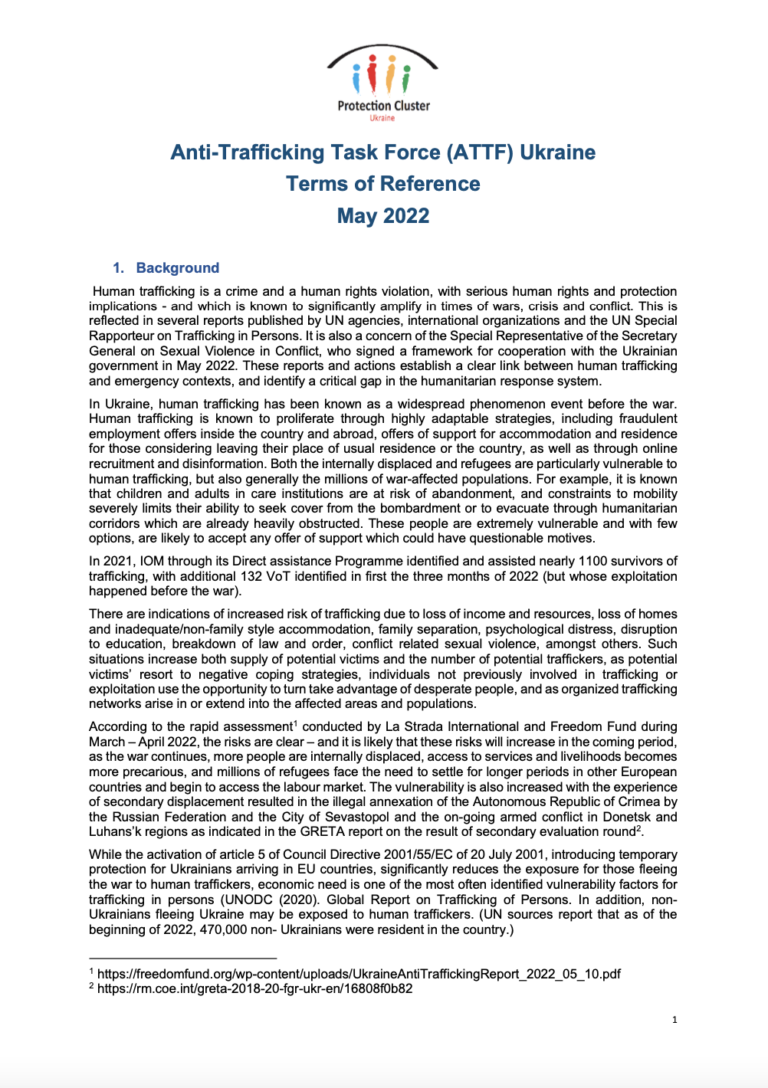Human trafficking is a crime and a human rights violation, with serious human rights and protection implications – and which is known to significantly amplify in times of wars, crisis and conflict. This is reflected in several reports published by UN agencies, international organizations and the UN Special Rapporteur on Trafficking in Persons. It is also a concern of the Special Representative of the Secretary General on Sexual Violence in Conflict, who signed a framework for cooperation with the Ukrainian government in May 2022. These reports and actions establish a clear link between human trafficking and emergency contexts, and identify a critical gap in the humanitarian response system.
Human trafficking is a crime and a human rights violation, with serious human rights and protection implications – and which is known to significantly amplify in times of wars, crisis and conflict. This is reflected in several reports published by UN agencies, international organizations and the UN Special Rapporteur on Trafficking in Persons. It is also a concern of the Special Representative of the Secretary General on Sexual Violence in Conflict, who signed a framework for cooperation with the Ukrainian government in May 2022. These reports and actions establish a clear link between human trafficking and emergency contexts, and identify a critical gap in the humanitarian response system.
In Ukraine, human trafficking has been known as a widespread phenomenon event before the war. Human trafficking is known to proliferate through highly adaptable strategies, including fraudulent employment offers inside the country and abroad, offers of support for accommodation and residence for those considering leaving their place of usual residence or the country, as well as through online recruitment and disinformation. Both the internally displaced and refugees are particularly vulnerable to human trafficking, but also generally the millions of war-affected populations. For example, it is known that children and adults in care institutions are at risk of abandonment, and constraints to mobility severely limits their ability to seek cover from the bombardment or to evacuate through humanitarian corridors which are already heavily obstructed. These people are extremely vulnerable and with few options, are likely to accept any offer of support which could have questionable motives.

